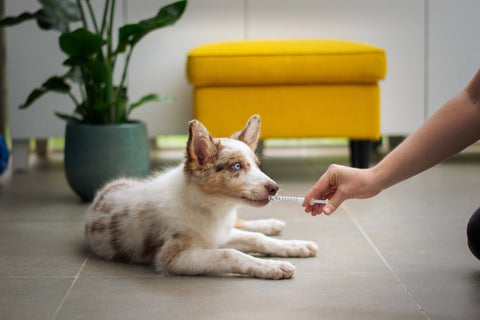As a pet owner, it is distressing to see your furry companion feeling unwell or in pain. It is important to understand the signs and symptoms of illness in dogs and to know what to do when your dog is feeling bad. In this article, we will discuss the steps you can take to help your dog feel better when they are not feeling well.
- Monitor Your Dog's Symptoms
The first step in helping your dog feel better is to monitor their symptoms. Keep a close eye on your dog's behavior and look for any changes in appetite, energy level, or behavior. Some common signs that your dog is not feeling well include:
- Loss of appetite
- Lethargy or lack of energy
- Vomiting or diarrhea
- Excessive panting or breathing difficulties
- Disorientation or confusion
- Changes in urination or defecation habits
- Increased thirst or frequent drinking
If you notice any of these symptoms or other changes in your dog's behavior, it is important to seek veterinary care as soon as possible.
- Provide Comfort and Support

When your dog is not feeling well, they may be in discomfort or pain. Providing comfort and support can help to ease their discomfort and improve their overall well-being. Some ways you can provide comfort to your dog include:
- Providing a comfortable and quiet place to rest
- Offering plenty of fresh water to drink
- Providing soft and comfortable bedding
- Offering gentle massage or cuddling
- Providing a warm or cool compress to the affected area
It is important to note that not all dogs enjoy being touched or cuddled when they are not feeling well, so it is important to observe your dog's behavior and respond accordingly.
- Administer Medication as Directed

If your veterinarian has prescribed medication for your dog, it is important to administer it as directed. Follow the dosage instructions carefully and be sure to give the medication at the appropriate time intervals. Some medications may need to be given with food, while others should be given on an empty stomach.
It is important to note that some medications can have side effects or interactions with other medications or supplements, so it is important to discuss any concerns or questions you may have with your veterinarian.
- Keep Your Dog Comfortable
In addition to providing comfort and support, it is important to keep your dog comfortable while they are not feeling well. This may include:
- Providing a comfortable and well-ventilated environment
- Ensuring that your dog is not exposed to extreme temperatures
- Providing a quiet and stress-free environment
- Offering light exercise or physical therapy, if recommended by your veterinarian
It is important to note that some illnesses or conditions may require more intensive care or hospitalization, so it is important to follow your veterinarian's recommendations and advice.
- Follow Up with Your Veterinarian
Finally, it is important to follow up with your veterinarian to ensure that your dog is recovering as expected. Your veterinarian may recommend follow-up appointments or additional tests or treatments to monitor your dog's progress and ensure that they are responding to treatment.
It is important to note that some conditions may require long-term care or management, so it is important to work closely with your veterinarian to develop a treatment plan that is appropriate for your dog's individual needs.
Conclusion
When your dog is not feeling well, it is important to monitor their symptoms, provide comfort and support, administer medication as directed, keep them comfortable, and follow up with your veterinarian. By taking these steps, you can help to ensure that your furry companion is on the road to recovery and feeling better in no time.











